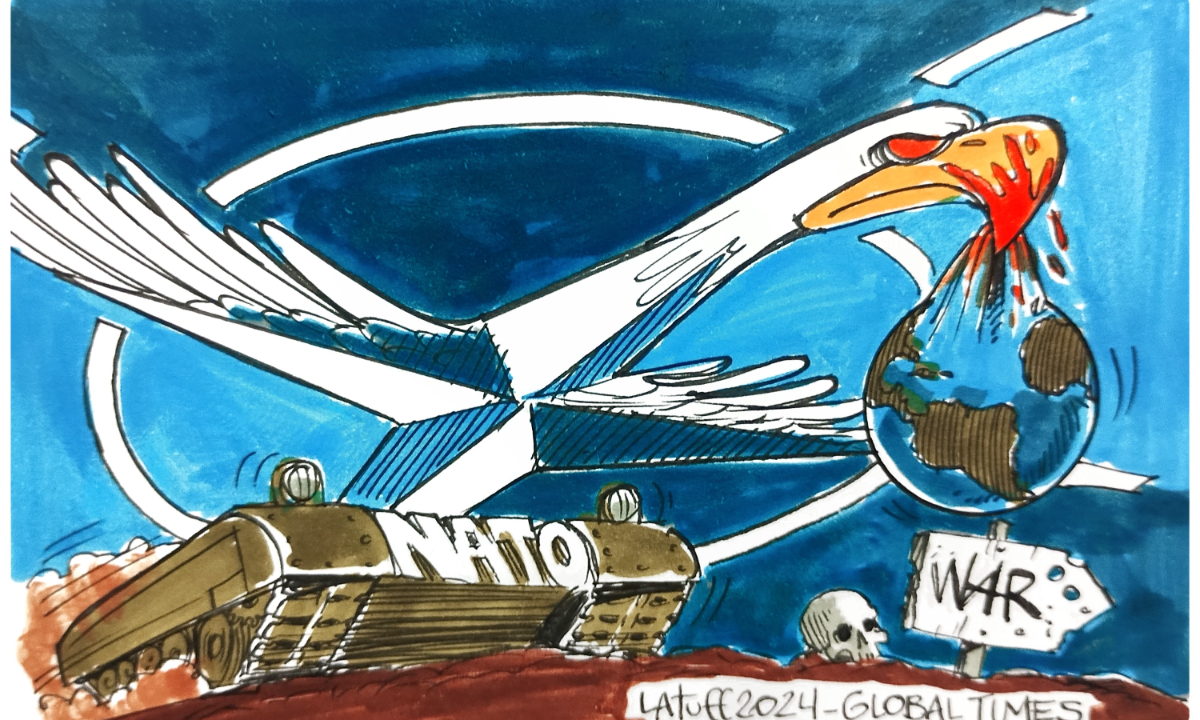
Cartoon: Carlos Latuff
This week, US Secretary of State Blinken and Secretary of Defense Austin will embark on a trip to Asia. A vital purpose of this visit is said to ensure US' support for its allies and partners. This comes as political uncertainties increase ahead of the US presidential election and as the US attempts to continue building its alliance relationships aimed at China.
A key aspect of this visit is Blinken and Austin's meeting with Japanese officials in Tokyo to discuss upgrading the military alliance, particularly enhancing the military command system to strengthen joint defense capabilities.
According to the South China Morning Post, last Wednesday, US Deputy Secretary of State Kurt Campbell said in an interview with South Korean news agency Yonhap that the US wanted to "institutionalize" the four Indo-Pacific partners of NATO as Washington refocuses its attention on the region.
Clearly, Washington will strengthen military ties with these countries and establish a whole set of mechanisms to achieve its goal of integrating them into the NATO framework.
The grouping of Japan, Australia, New Zealand, and South Korea is commonly referred to as the IP4. These four countries are all critical "global partners" of NATO and serve as "landing points" for NATO's "strategic air routes" stretching into the Asia-Pacific region.
Prior to Campbell's remarks, IP4 leaders participated in the NATO summit held in Washington for the third consecutive year last week and issued a joint statement.
Evidently, the United States is following its plan step by step, attempting to "extend the life" of NATO, the world's largest military bloc, by extending NATO's reach into the Asia-Pacific region in the global strategic game and jointly undertaking regional defense with China as the primary strategic competitor.
How NATO expands into Asia is a serious challenge to security in the region.
After the end of the Cold War, NATO was like a player on the verge of elimination, desperately needing to find a new "energy source" to maintain its raison d'être.
NATO, as a military alliance, its very existence implies potential confrontation and conflict. Just as races in the StarCraft video game need constant expansion and conquest to survive, NATO is caught in a similar logical loop.
The logic of expansion through war, conflict, and constant tension-creation exists in the virtual world and is similar to the logic of NATO's development in the real world.
The conflict between Russia and Ukraine provided NATO with an excellent opportunity for "life extension." Now, the US is turning its gaze toward Asia, attempting to extend NATO's tentacles to China's periphery.
This strategic expansion is like moving an unstable powder keg from Europe to Asia. It won't increase regional security and may even trigger new tensions and conflicts.
The US seems to be playing a grand chess game, with NATO and its Asian allies used as pawns on the chessboard.
Following this US strategy, Asia-Pacific countries may eventually find themselves gradually becoming proxies for US geopolitical maneuvering in the region, drawn into a new cold war that does not serve their own interests.
This situation is like a multiplayer online game, with the US as the most powerful player. It is redefining the rules of the game by incorporating the regional security order into the NATO framework. If not careful, other players may become tools for the US to "farm experience points."
Asia's peaceful development differs from a virtual battlefield in electronic games, and its development does not have to follow in Europe's footsteps.
NATO's continued involvement means the moment of this electronic game's crash is drawing ever closer. The victory NATO cannot achieve in electronic games is even less likely to be realized in the real world.




